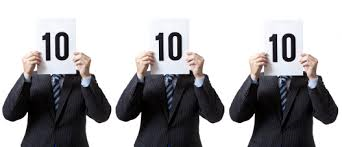Your trial ends. The jurors are released. You ask them their impression of you and your witnesses . . .
- What would you WANT them to say, and
- What WOULD they say?
In an ideal world, those two answers would match. When they match, it means that your team was consistent and positive and confident. Your team made the impression on the jury that you wanted to make. When they do not match, you have trouble. So, how do you get those answers to match in a way that helps your case? –Create a case-specific mission statement.
We have all seen mission statements hanging on placards. Most of the time, they are just words—words that have no meaningful relationship to actual behavior. But when we see people abiding by a mission statement, even if we don’t know there is one in effect, we are impressed. There is “just that certain something” we see when a person is following a mission statement in our presence. For example, Michael Jordan used “I can’t stand NOT trying” as his basketball mission statement. When you watched him play, that is what you saw regardless of the outcome of the game. Disney uses various forms of the “Happiest Place on Earth” and their employees consistently comply. You may not know the words of their mission, but “you know it when you see it.”
Litigation creates fertile ground for using an effective mission statement. Under the stress of a trial, your team needs a guidepost to dictate demeanor. If a jury sees your team confident and unfazed by a seemingly difficult situation [a bad fact is introduced], then they will think it must not be such a terrible thing. In contrast, if your team rolls their eyes, grimaces, looks disdainful, or seems angry at the presentation of that same fact, the jury interprets that fact as damaging. A team mission statement allows you to react with a purpose and a guideline, rather than just reacting.
Your firm mission statement, if you have one, is not the one to guide your behavior in a trial. You need a specific mission statement for THIS case. Here is a mission statement for a recent case that was cleverly borrowed and adapted from the client’s corporate mission statement [which gave it meaning to the corporate rep and the witnesses from the company]: “Creative, participative, innovative, positive, and never flinching. Ever.” You can see how your trial team, either in court or in pre-trial preparations, would reap the benefits from complying with this statement.
Mission statements, when followed . . .
- help your team decide how to respond when the stress levels get high;
- help your witnesses on the stand. When we work in witness preparation, we let the witness know the trial mission statement AND we have them develop a personal one that is in line with that. Then, on the stand, when they are being attacked, they can, in their own mind say, “I am confident, positive and I am nobody’s doormat,” before they answer the question. This helps calm your witnesses when they are under fire.
- help the jury decide the weight behind certain points being made (by viewing your reaction to the point);
- help you give feedback to your team about their behavior because it sets a standard by which performance can be measured.
Although methodical research on the correlation between mission statements and performance is difficult to conduct, there are studies that show better performance and/or morale among organizations that have a mission in place versus those that do not [i.e., Bart, C.K. (1999). Mission statement content and hospital performance in the Canadian not-for-profit health care sector. Health Care Management Review, 24(3), 18-29. Stamps, D. (1999). Best mission statement. Training, 36(12), 45-48.]
Good mission statements are
- succinct
- memorable
- unique to the team
- realistic
Objective research aside, Michael Jordan, Mickey Mouse, and your jurors will tell you that your conduct, guided by a mission, made a good impression on them that won you points in deliberations.
Share This Story, Choose Your Platform!
Click below to add your email address to our mailing list and receive the latest Persuasion Tips right in your inbox!

